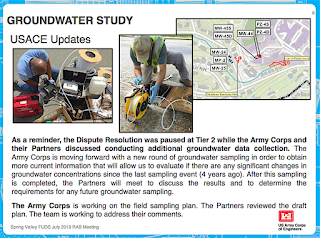EPA [wants] to set a drinking water limit for perchlorate that treats a loss of two IQ points as a "no-effect level." The Trump EPA is proposing to set the enforceable drinking water Maximum Contaminant Level (MCL) of 56 parts per billion (ppb) ... In 2016 NRDC sued EPA to set a health-protective drinking water standard for perchlorate ... Fifty pediatricians and other doctors, health scientists, and environmental advocates joined together to tell EPA Administrator Wheeler that, "The EPA proposal for this widespread and hazardous drinking water contaminant is deeply concerning ... We urge the agency to establish a standard based on the best available science" ... In addition, NRDC submitted lengthy detailed technical-legal comments to EPA letting it know that we are strongly opposed to its proposal ... EPA’s proposal fails to meet the legal requirements of the Safe Drinking Water Act (SDWA). This unlawful proposal should be withdrawn, and without any more delays EPA should set an enforceable drinking water standard of 1 - 2 ppb ... Perchlorate is found in the water at almost 70 percent (248) of military installations that have been tested.
Jennifer Sass
National Resources Defense Council
August 26, 2019
Extensive research demonstrates that exposure to perchlorate disrupts the thyroid hormone balance, thus posing a risk to the fetus and the young child. Fetal and childhood exposure to perchlorate can impair cognitive development, which can cause lifelong harmful consequences. Several states have set legal standards and public-health benchmarks for perchlorate in water. The most protective regulation is in Massachusetts, which set a legal limit of 2 ppb. In 2015, California published a public health goal value of 1 ppb for perchlorate in drinking water, which accompanies a legal maximum contaminant level of 6 ppb for perchlorate ... EWG is especially concerned that the EPA is considering withdrawing the agency’s 2011 determination to set a national drinking water standard for perchlorate ... EWG urges the EPA to incorporate into its revised perchlorate standard considerations of a wide variety of neurodevelopmental risks due to perchlorate, such as changes in behavior and learning, motor development and control, and emotions – the type of adverse effects that may be independent of alterations more readily measured by IQ.
Olga V. Naidenko, Ph.D.
Environmental Working Group
August 26, 2019
The agency proposes to set a perchlorate MCL at 56 ppb, nearly 4 times what EPA previously said is safe in its previous Lifetime Health Advisory. The agency further stated that it may set a standard as high as 90 ppb, six times higher than its health advisory, and even proposed the possibility of establishing no standard at all ... Not only is EPA’s proposal a clear threat to the health of millions of people, it is also a manifest violation of the SDWA. The Act requires EPA to use the “best available peer reviewed science” (SDWA §1412) ... EPA solicited the peer review and advice of the Science Advisory Board (SAB), as required by the SDWA. But then EPA explicitly decided not to follow some of the most important recommendations of the SAB. The best available science, as recommended by the SAB, requires consideration of multiple lines of evidence ... EPA should set the MCL Goal at zero based on the extensive evidence of harm at extremely low doses, the lack of a clear threshold for these effects, and the need for an adequate margin of safety to protect the most vulnerable populations, as required by the SDWA.
50 Medical Experts
Letter to EPA
August 26, 2019
Aug 6, 2019
Subscribe to:
Post Comments (Atom)





No comments:
Post a Comment